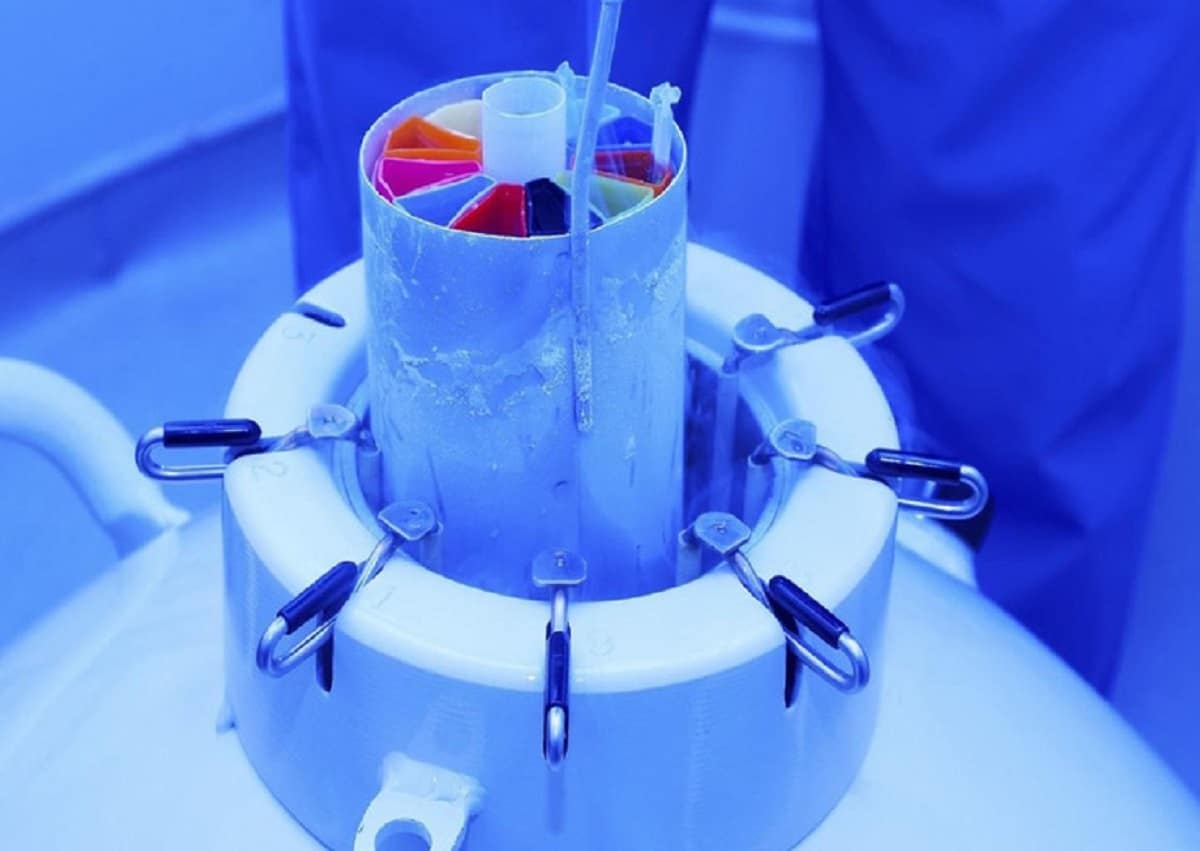
In a simple way the cryopreservation is the possibility of freezing oocytes, tissues, embryos or semen, for both women and men. In general, what is most often done is freezing the eggs, but there are also other possibilities. Today we will talk to you specifically about embryo freezing.
This technique is becoming more and more frequent, both by women who want to delay their motherhood, even if they are healthy, and those who suffer from cancer or other problems. Every 2 years the clinic, or the embryo bank in which yours are deposited, will ask you if you want to continue maintaining them. The maintenance service costs, more or less, between 300 and 600 euros per year.
How does embryo freezing or cryopreservation work?

After women who have undergone cycles of in vitro fertilization, several good quality embryos are available that will not be used. To maintain them, cryopreservation is needed, freezing of embryos that are saved for future attempts. Frozen embryos are kept in tanks with liquid nitrogen at -196 degrees Celsius.
Embryo freezing is about a process that does not modify or alter the quality of the embryos. It is done through vitrification, a not very aggressive technique, if we compare it with the old slow freezing ones, which allows to have high survival and pregnancy rates. Still, in general, freezing and thawing are potentially aggressive processes for embryos, although not as aggressive as they were in the past.
With cryopreservation decreases the risk of multiple pregnancy. Since there is the possibility of not transferring all the embryos at the same time, but they can be preserved and have several opportunities. This also avoids subjecting the woman to a new ovarian stimulation treatment and a new puncture.
For whom is this technique recommended?

The cryopreservation of embryos is a recommended technique for those women who have undergone some highly complex assisted reproduction treatment and have embryos that cannot be transferred fresh. The criteria that these embryos must meet are demanding and different from those that meet those embryos that were implanted in in vitro fertilization.
One of the reasons why cannot be transferred, for example is that they exceed in number. In Spanish legislation it is allowed to transfer up to a maximum of 3 embryos. It is also an advisable technique in those cases, in which regardless of the number of embryos obtained, it is decided not to carry out a fresh transfer to the mother's uterus, either by the woman's own choice or for medical reasons.
Another indication for embryo cryopreservation may be cases in which one of the members of the couple suffers a disease that, later, will prevent him from obtaining gametes. This is the case, for example, of women who have to undergo chemotherapy treatment.
Legal issues about embryo freezing in Spain

Law 14/2006 of May 26, on assisted human reproduction techniques, establishes the obligation to cryopreserve all the remaining viable embryos from an assisted reproduction cycle.
In Spain there are 4 possible destinations:
- Su use by the wife herself or her spouse. In Spain the limit for a woman to use them is 50 years.
- Donation for reproductive purposes. They can be donated to other people, free, anonymous, formal and confidential. This option is not widely used.
- Donation for research purposes. In this case, only embryos that have not developed in vitro after 14 days after fertilization of the oocyte can be donated to research.
- Cessation of conservation, without other use. It only applies once the maximum conservation period established by law has expired.
At the time of starting in vitro fertilization treatment, you will have to decide and sign the destination for the frozen embryos not transferred. Throughout cryopreservation you can change this decision.